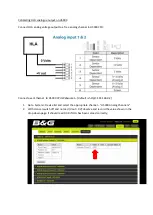
Multitron Pro - Incubation Shaker
Appendix
Page
180
of
185
2013-02-19
12.4 Purifying Methods
Method
Description
Distillation
Distilled water is often defined as bottled water that has been
produced by a process of distillation. This water is practically free
of salts, organic compounds and microorganisms (electrical
conductivity of not more than 10 µS/cm and total dissolved solids
of less than 10 mg/L).
Distillation involves boiling the water and then condensing the
steam into a clean container, leaving most solid contaminants
behind.
Because this process is
energy-consuming
and ecologically
questionable, demineralized water is preferred for most
applications.
Deionization / Demineralization
Deionized water, also known as demineralized water (DI water,
DIW or de-ionized water), is water that has had its mineral ions
removed, such as cations from sodium, calcium, iron, copper and
anions such as chloride and bromide.
Deionization is a physical process which uses specially-
manufactured ion exchange resins which bind to and filter out the
mineral salts from water.
Because the majority of water impurities are dissolved salts,
deionization produces a high purity water that is generally similar
to distilled water, and this process is quick and without scale
buildup.
However, deionization does not significantly remove uncharged
organic molecules, viruses or bacteria, except by incidental
trapping in the resin.
Additionally sterilized demineralized water is often sold as
equivalent to distilled water.
Water softening
Water softening is the act of reducing the dissolved calcium,
magnesium, and to some degree manganese and ferrous iron
ion concentration in hard water.
A common water softener is sodium carbonate (Na
2
CO
3
).









































